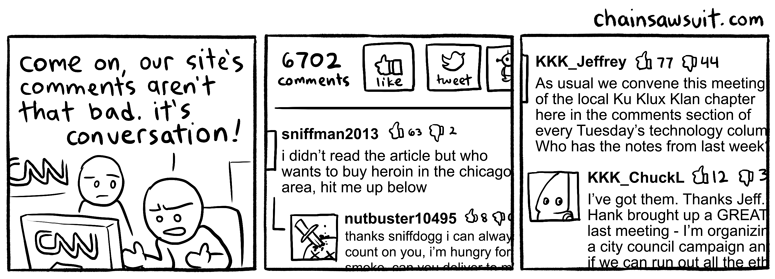Time management
The psychology of getting stuff done
2017-06-18 — 2023-10-20
Opt-in self-behaviour control, by my past self, of my current self who is bored and wants to go on lunch break.
1 Meta problem: searching for productivity advice
Jan Hendrik Kirchner, Via productiva
Before we dive in, here is a bitter lesson upfront; If your goal is to be productive, you should work and not read blog posts. If you are looking for a way to be productive, stop reading this now and do whatever you’re supposed to be doing.
2 Time management: basic
2.1 Interruptions
2.2 Estimating project time
Difficult. See project management.
2.3 Doing good stuff
Andrew Montalenti’s Queue of queues hack which unifies the various todo lists into a master todo list (using in his case, sunsama).
The Pomodoro technique.
- Web based timer
- Web based timer 2 (with fancy notifications)
- Various smartphone/tablet apps exist, e.g integrates pomodoro timers with tracking.
Team pomodoros are a thing
- Intend, discussed below,
- Cuckoo
- Teamodoro: pomodoro timer for teams
- CLOQ
- Marinara by 352
I wonder if I could integrate a pomodoro timer to my MS Teams status? Looks like it.
- Use Microsoft To Do and Power Automate to set Teams to Focusing status during a Pomodoro
- RoundPie App (AFAICT formerly Pomodoneapp) supports such integration via Zapier
-
- Send us your todos.
- Send proof you completed them.
- Send us a screenshot, or some other proof that you finished them. If you don’t, we will take you to task. If you default, we will follow up with you, and not stop bugging you till it’s resolved.
Paul Graham, How to Lose Time and Money
The most dangerous way to lose time is not to spend it having fun, but to spend it doing fake work. When you spend time having fun, you know you’re being self-indulgent. Alarms start to go off fairly quickly. If I woke up one morning and sat down on the sofa and watched TV all day, I’d feel like something was terribly wrong.
And yet I’ve definitely had days when I might as well have sat in front of a TV all day—days at the end of which, if I asked myself what I got done that day, the answer would have been: basically, nothing. I feel bad after these days too, but nothing like as bad as I’d feel if I spent the whole day on the sofa watching TV. If I spent a whole day watching TV I’d feel like I was descending into perdition. But the same alarms don’t go off on the days when I get nothing done, because I’m doing stuff that seems, superficially, like real work. Dealing with email, for example. You do it sitting at a desk. It’s not fun. So it must be work.
2.4 Tracking stuff
Apps that monitor my activities for productive ends. Careful how you use your metrics. Don’t Goodhardt yourself. Nonetheless, seeing where that time went is a helpful way to decide what to do next.
ActivityWatch is an app that automatically tracks how you spend time on your devices.
It can be used to keep track of your productivity, time spent on different projects, bad screen habits, or just to understand how you spend your time.
Alternatively, there is the classic RescueTime. Although the fact that it wants to spy on your keyboard input is a little bit creepy. I do not trust this closed-source app to monitor my typing. Maybe prefer ActivityWatch in that case, since it is open-source and extremely privacy-focused.
Workflowy should probably be filed differently, but they seem popular in the Akrasia crowd, e.g. integrating with Intend.
More at quantified self.
2.5 Blocking distractions
Avoid yak shaving.
Here, watch Humanetech wring their hands about how the modern internet is a parasite upon attention spans. They are part of a recent performative pivot by tech to go from claiming “wheee we know how to addict people to your product 🤑” to “oops maybe attempting to addict people to tech is not great please don’t make money the way that we did 🥺”. Too late! The internet is a battlefield and an addiction machine and a recruitment zone for radicalisation, and a place we all spend time triggering each other. If you are not here to participate in someone else’s ideological dispute, you might want to protect your precious attention resources by installing software to restrict the supply of internet rage.
Humanetech have some simple suggestions which have been useful for me personally, but fall short of systemic fixes, like getting society as a whole out of the social media doomsday machine and solving the coordination problems entailed by that. (FWIW I would happily automate my entire social media identity because it doesn’t bring me any joy.)
What follows are some of my preferred band-aids upon attention leakage.
I prefer minimalist options, using free browser-based website blockers. stayfocusd (Chrome only), leechblock (Chrome/Firefox).
Also you can avoid comments, which are badly designed disaster zones where nothing of true interest happens apart from horrifying disasters of human communication. I use the comment blocker, shutup:
Comments are awful. Shut Up hides them by default, sparing your sanity and preventing you from getting sucked into a world of hurt.
For the sites where discussions can be more constructive — like GitHub, Reddit, or Stack Overflow — you can show comments by default. Shut Up is an app you can install on an iPhone or iPad, and a browser extension you can install in Chrome or Safari.
There are many, more comprehensive options, some of which I have tried. A popular one among my friends is Freedom which I personally found a little too intrusive. Apps like SelfControl hide the minutely engineered social media addiction machines from your productive hours. You could use cold turkey (Windows) for more comprehensive blocking of whole apps etc. See also a (weirdly quiescent) thread on producthunt.
If you want to not just block things but also track your usage so you know how to manage them, there are apps that do that too. RescueTime is one. There is a listicle here of alternatives.
3 Theory: time discounting etc
4 Advanced: autoblackmail-based time-discounting management
Weaponise your social guilt and loss aversion for personal gain! Use other biases against the time management bias.
Welcome to the world of Goal setting apps.
The next level up is the commitment contract world.
Beeminder is a full-featured quantified-self commitment contract plus progress quantifier. (integrates with Intend)
Bonus: There is a lesser-known graphical editor/visualizer/SVG generator, road.beeminder.com
stickk provides basic commitment contracts
pact is not just loss-driven but pays kickbacks, which is an interesting twist
- Make a weekly Pact to exercise more or eat healthier. Set what you’ll pay other Pact members if you don’t reach it.
- Meet Your Goals Use the Pact app to track your progress.
- Reap the rewards Earn real cash for living healthily, paid by the members who don’t!
4.1 Beeminder in particular
Beeminder is totally my jam and how I get through life.
Various useful links for my usage:
5 Gamification
Of course, one could harness the power of turning things into games to turn your time into a game. As above, but the rewards and costs are points and levels and badges or something.
Examples
-
Habitica is a video game to help you improve real life habits. It “gamifies” your life by turning all your tasks (habits, dailies, and to-dos) into little monsters you have to conquer. The better you are at this, the more you progress in the game. If you slip up in life, your character starts backsliding in the game.
-
At the heart of SuperBetter is the Live Gamefully® method, a framework that brings the psychological strengths and mindset of gameplay to real life.
The method promotes new levels of personal growth as a result of stress and change. That’s why it’s called SuperBetter.
Others? I thought there were more, but I ain’t seen any recently.
Anyway, I won’t research that because gamification, at least as practiced by these apps, doesn’t seem motivating to me.
6 Mutual time management
Possible exception to the social media timewasting rule: Social networks for mutual social productivity inspection, “Mutual shame, mutually agreed upon”, or the crowdsourced-opt-in-panopticon. Examples:
Intend has an element of this, through social commitment: it encourages you to commit to doing some things, then mark off doing them, publicly. Also it has “rooms” for mutual inspection of concentration. The flagship one (which is free) is probably the Less Wrong Study Hall.
See also other social-productivity systems at online collaboration.
7 Habit design
Aligning the things I do by default with the things I need to be doing. Much to say here and this is important in my daily life. Two books I’m interested in reading along these lines are Clear (2018) and Tracy (2007).
8 What I do in practice
I am ashamed of how well Intend + Beeminder works for me as a self-blackmail/goal-setting technique.
However, Intend is quite expensive (USD10/month) for a service which I only use a small part of.
I wonder if I could keep Beeminder and use some other services to do the time tracking? Something that integrates with Beeminder, of course, directly or via web automation.
9 Incoming
Zapier recommends some flowtime technique timers which integrate well with it but Zapier, for all that it is an excellent service, is itself outrageously expensive (USD20/month for basic, USD49 for professional; I could not do anything interesting to me on the free tier). Tmetric looks pretty. AFAICT the Toggl tracking is better for my integrations. It is nearly as expensive as Intend though, if I need the paid version (USD9/month), although the free one is fine. I would pay half that much. Zapier also reviews some classic pomodoro timers. pomodone looks like the most natural fit — USD4/month for the good version.
Amazing Marvin - Customizable Task Manager and Daily Planner
-
To make you feel pride rather than stress or shame, the ideal features of a todo system are something like:
- Accomplishments accumulate
- Long-term scope to see the arc of your success
- Multiple levels of scope to get sense of reward at multiple scales
- Recognize that tasks and events all compete for one resource—time
- Limit your daily tasks and get “Bonus Time”
- Clear visual families & dependencies, probably through spatial organization




